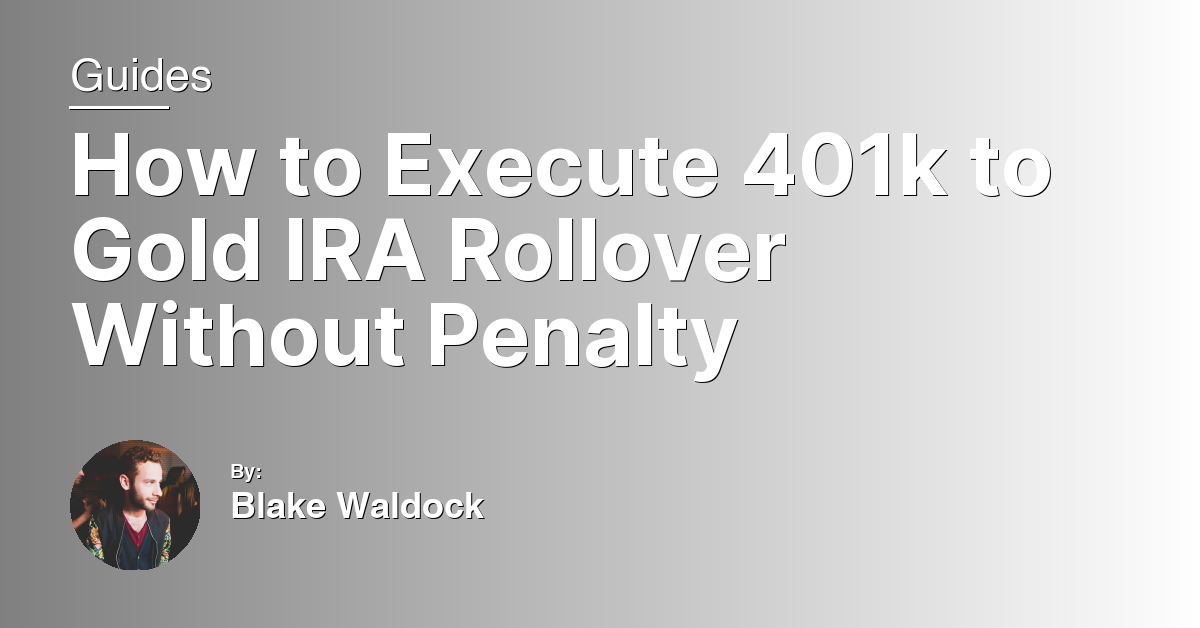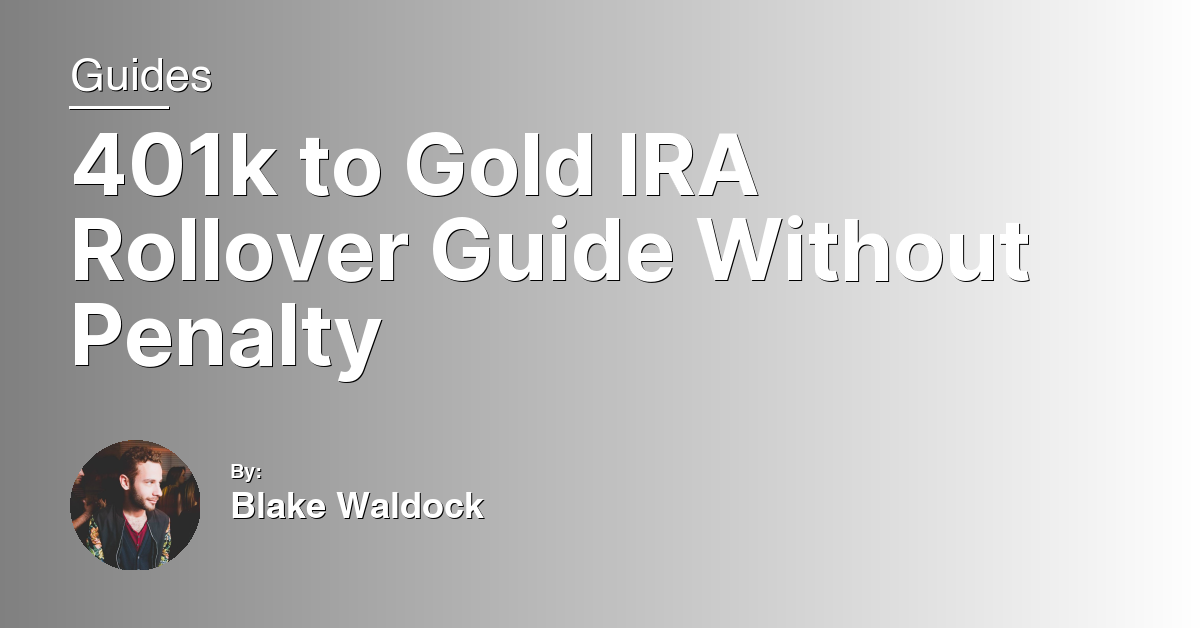In the realm of retirement planning, diversifying your investment portfolio is key to navigating the unpredictable waves of the market. Among the myriad of options, physical gold stands out as a timeless asset, revered for its stability and potential for appreciation. This article provides a comprehensive guide on incorporating this precious metal into your self-directed IRA, offering a smart path to safeguard your savings and possibly gild your retirement years. Let’s delve into the intricacies of investing and buying physical gold to enhance your financial future.
Setting Up a Self-Directed Gold IRA
To set up a Self-Directed Gold IRA, start by choosing a custodian experienced in precious metals. This financial institution or approved trust company will manage your IRA, ensuring compliance with IRS regulations. Next, open an account with your selected custodian, which may involve a setup fee and annual maintenance charges.
Research and select the gold or other precious metals you intend to purchase, such as bullion, coins, or bars. The IRS has specific purity requirements, so ensure your selections comply. Work with your custodian to purchase these metals, using funds from your IRA. They may have relationships with specific dealers or brokers, potentially offering a smoother transaction process.
Converting Existing IRAs to Gold
To convert existing IRAs, such as a Traditional or SEP-IRA, into gold, you must first ensure your IRA is self-directed. This type provides the flexibility needed to invest in a broader range of assets, including precious metals like gold, beyond the usual stocks and mutual funds.
Consult with a financial adviser to navigate the conversion process, ensuring adherence to IRS regulations to maintain the tax advantages of an IRA. You’ll then select a custodian experienced in precious metal investments, as not all custodians offer this option.
After setting up your self-directed IRA, you’ll work with your custodian to purchase gold bullions or coins. It’s critical to buy IRS-approved precious metals from reputable dealers to avoid fraud and ensure the security of your investment.
Understanding the Rules for Gold IRAs
| Rules for Gold IRAs | |
|---|---|
| 1. Eligible Gold Types | Only certain types of gold are eligible for inclusion in a Gold IRA, such as American Gold Eagle coins, Canadian Gold Maple Leaf coins, and bars with a minimum fineness of 0.995. |
| 2. Custodian Requirement | All Gold IRA assets must be held by a custodian or trustee, who will ensure compliance with IRS regulations and provide reporting to the account holder. |
| 3. Contribution Limits | Contributions to a Gold IRA are subject to the same annual limits as traditional IRAs, currently set at $6,000 for individuals under 50 and $7,000 for those over 50. |
| 4. Distribution Rules | Withdrawals from a Gold IRA are subject to the same distribution rules as traditional IRAs, with penalties for early withdrawals before age 59 ½. |
| 5. Storage Requirements | Physical gold held in a Gold IRA must be stored in an IRS-approved depository, which must meet certain security and reporting standards. |
Types of Gold Investments in IRAs
Investing in gold within your Self-Directed IRA offers diverse options, each with unique advantages and considerations. You can invest in physical gold like coins and bullion, providing a tangible asset and hedge against inflation. These physical forms of gold must meet the purity and fineness standards set by the IRS.
Alternatively, gold can be part of your IRA through gold ETFs (Exchange-Traded Funds), mutual funds, or stocks in gold mining companies, offering exposure to gold’s price movements without holding the physical metal. These paper or electronic forms of gold investment are easier to trade and can diversify your IRA portfolio.
For those looking at gold as an alternative investment, futures contracts and options in the commodity market allow sophisticated investors to speculate on gold prices. However, these carry a higher risk and require understanding of the market.
Lastly, investing in gold through a Self-Directed IRA offers tax advantages, such as tax deferral or tax-free growth in the case of a Roth IRA. It’s important to consult with a financial adviser or broker-dealer to understand the specific implications for your investment strategy and ensure compliance with IRS regulations.
The Pros and Cons of Gold IRAs
Pros of Gold IRAs
Investing in a Gold IRA offers a hedge against inflation, as the value of gold often moves inversely to the currency, safeguarding your investment during economic downturns. It diversifies your retirement portfolio beyond traditional stocks and bonds, incorporating a tangible asset that has maintained value over centuries. Gold IRAs enjoy the same tax advantages as conventional IRAs, including tax deferral on gains, which can enhance long-term growth. This allows for both Roth and SEP-IRA contributions, catering to different individual financial situations.
Cons of Gold IRAs
Setting up and maintaining a Gold IRA can incur higher fees compared to traditional IRAs, including setup fees, storage fees, and insurance, impacting overall returns. The liquidity of gold can be lower than stocks or mutual funds, making it harder to sell quickly at market value. Investors face stringent IRS regulations on the purity and storage of physical gold, requiring it to be held in an IRS-approved depository, limiting personal access. The performance of gold does not correlate with dividends or interest, potentially resulting in lower returns compared to other investments in a bull market.
Investing in Physical vs. Gold Securities
When deciding between investing in physical gold or gold securities for your Self-Directed IRA, it’s crucial to weigh the benefits and risks of each option. Physical gold, such as coins or bars, provides tangible assets that can act as a hedge against inflation and economic downturns. However, storing physical gold incurs additional costs for secure storage and insurance, and there might be concerns about liquidity and ease of sale.
On the other hand, gold securities, including ETFs, mutual funds, and mining stocks, offer easier liquidity and do not require physical storage. These financial instruments allow investors to gain exposure to gold’s price movements without the need to hold the metal. However, they might carry higher fees, introduce counterparty risk, and do not offer the same direct ownership as holding physical gold.
For those looking to maximize the tax advantages of a Self-Directed IRA, physical gold offers a unique alternative investment that diversifies the portfolio away from traditional stocks and bonds. Yet, gold securities can be a more convenient option, offering exposure to the gold market and the potential for significant returns without the logistics involved in physical gold investment. Ultimately, the choice between physical gold and gold securities in your IRA depends on your investment strategy, risk tolerance, and financial goals.
How Much to Invest in a Gold IRA
Deciding how much to invest in a Gold IRA hinges on your financial situation, investment goals, and overall portfolio diversification strategy. Experts often recommend allocating between 5% and 10% of your portfolio to precious metals like gold, silver, platinum, and palladium to mitigate risk during economic downturns and hedge against inflation.
Investing in gold through a self-directed IRA offers tax advantages, allowing your investment to grow tax-deferred or, in the case of a Roth IRA, potentially tax-free. However, remember that fees associated with buying, storing, and insuring physical gold can impact your return on investment.
Work with a reputable broker-dealer or financial institution approved by the IRS to ensure compliance and security of your investment. Regularly review your investment against market performance and adjust your gold holdings as necessary to maintain your desired level of exposure and balance in your retirement portfolio.
Physical Possession and Gold IRAs
When investing in a Gold IRA, it’s crucial to understand that while you’re investing in physical gold, the physical possession of the metal is not held by you personally. Instead, the IRS mandates that the gold be stored at a qualified facility. This regulation ensures the security of your investment and complies with the tax advantage rules governing IRAs.
Investors have the flexibility to choose between gold coins, bars, or bullion, but must ensure these assets meet the purity and fineness standards set by the IRS. Reputable custodians and facilities will handle the storage, insurance, and security of your physical gold, for a fee. This arrangement not only safeguards your investment but also aligns with the regulatory requirements of the Internal Revenue Service and the U.S. Securities and Exchange Commission.
Incorporating gold into your IRA portfolio can serve as a hedge against inflation and recession, diversifying your investment strategy beyond traditional stocks, bonds, and mutual funds.
Assessing the Risks of Gold IRAs
Assessing the risks of Gold IRAs is crucial before incorporating them into your retirement portfolio. Gold, while a stable investment against inflation and recession, carries its own set of risks. The market for gold, like any commodity market, can be volatile, influenced by global economic factors, currency values, and geopolitical tensions.
Investors should be wary of the costs associated with Gold IRAs, including setup fees, storage fees, and insurance, which can erode the tax advantages offered by an IRA. The Internal Revenue Service (IRS) has strict rules on the types of gold (bars, coins, bullion) that can be included, which necessitates dealing with approved custodians and storage facilities to avoid penalties.
Furthermore, the physical nature of gold requires secure storage to prevent theft and fraud, adding another layer of complexity compared to stocks, mutual funds, or electronic assets. Lastly, while gold can be a hedge against market downturns, it typically does not generate income or dividends, which could impact long-term growth and the diversification of your retirement portfolio.

